HELIODOR
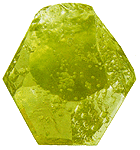
 Characteristics of the mineral.
Characteristics of the mineral.
The most popular are yellowish-green, lemon-yellow and golden-yellow with a honeyed shade of transparent heliodores (golden yellow with impurities of uranium beryllium). Heliodorus also include gray and white with a yellowish hue of beryl. Sometimes there are very large transparent heliodors of jewelry quality. The quality and value of stones is determined by their transparency. Often there are opaque stones, but their price is low.
Heliodorus with an admixture of uranium have weak radioactivity (they have weak radiation radiation). Heliodorus should not be irradiated by uranium impurities. If the color of the heliodoras is excessively intense (dark) or the stone is large (more than 1.5 x 1.5 x 1.5 cm), we do not recommend buying and especially wearing this beryl heliodor - the level of its natural radiation can exceed 24 milli / Hour, it is not recommended to store at home and even more so constantly wear on the body.
For security reasons, we do not recommend the purchase of transparent, defect-free (without visible internal defects) samples of heliodores and other transparent, defect-free stones larger than 1.5 x 1.5 x 1.5 cm in private collections. They can be officially leveled to jewelry raw materials and licensed Activity. If the sample is thin (regardless of the degree of defectiveness, thinner than 1.5 cm) - regardless of the area and other dimensions, it is not a raw material for the jewelry industry in principle.
Heliodorus sometimes differ exceptional purity and transparency, for example, the rare beauty of the bright golden beryls of Transbaikalia. Sometimes zoned crystals are found. In the golden beryl of Transbaikalia, alternating colors of different types along the length of the crystal are observed. Such beryl resemble polychrome tourmalines. The yellow color of heliodorus disappears when heated to 400 o C. The crystals become colorless or bluish. Most of the heliodores are mined in Brazil, although heliodor deposits are also known in Namibia, Sri Lanka, USA, in Madagascar.
For heliodorus, citrine, chrysoberyl, topaz, corundum, apatite, tourmaline, orthoclase, syngalite, synthetic spinel, glass can be mistakenly mistaken. Among the properties and features of heliodorus, which have diagnostic value, it is necessary to single out rather low refractive indices, birefringence, density, characteristic absorption lines and the presence of liquid and gas-liquid inclusions located in the cracks and tubular channels of heliodor.
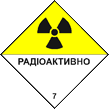 Physical features of heliodores.
Physical features of heliodores.
This mineral contains radioactive components . From the point of view of crystal physics, beryl heliodoras of small size and slightly colored are inscribed in a small amount of radioactive uranium compounds or contain it in small amounts. These are correct and safe from the point of view of the level of radiation (up to 19-24 milli / g / hr).
If the heliodores are colored intensively or are large , the probability is high that this causes an increased natural level of radiation radiation of beryl heliodores (from 29-32 milli-rad / hr and higher) -categorically forbidden to store them in home collections, subject to serial and industrial faceting (especially In home conditions and industrial premises, where a large number of personnel work). They are strictly forbidden to be irradiated and ennobled in nuclear reactors and transported in large quantities (in total from 29-32 milli-radentgen / hour and above). Transportation of radioactive stones without the sign "radiation" is forbidden.
It is safe to wear light, small beryl heliodoras, regardless of their shape on their hands (in rings and bracelets - "wristbands") and on their legs - as far as possible from the thyroid gland, birthmarks, large moles (especially convex), from the breast, superficial lymph nodes etc. Easily damaged by radiation objects on the human body. In any case, for reasons of safety and environmental friendliness, it is not recommended to wear heliodores permanently and keep large samples of this mineral in the apartment or office (the house and apartment are not a mineralogical museum with an allowable radiation level from 32 to 120 milli-radentgen / hour and higher for special exposures and mineralogical special reserves ).
Dangerous is the direct contact with the body and the wearing of point and diffuse sources of radiation and radioactive components on the body (about 50% of the radiation is absorbed by contact with the outer surface of the body and about 100% of the radiation - when a radioactive or contaminated object is ingested).
Magic properties of stones.
The ancient Greeks believed that the Sun object is a sparkling chariot, harnessed by four fire horses. On her, the radiant god Helios every day sings through the sky. At night, he returns to the golden cup on the sea home, where his sisters are waiting for - the goddess of the night Selene and the goddess of the dawn Eos. In honor of Helios in the early XX century. Varieties of transparent beryl of golden color began to be called heliodores. In the literal translation, heliodorus means "the gift of the sun." It is believed that the warm shades of Heliodorus can help a person to find peace of mind and become wiser. This stone inspires joy in the heart of its owner, bears peace and tranquility. Heliodor will help create an atmosphere of relaxation and entertainment. There is an opinion that an ornament with heliodor, belonging to a woman, can increase the number of her admirers.


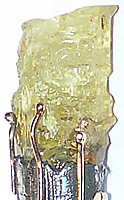
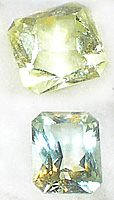
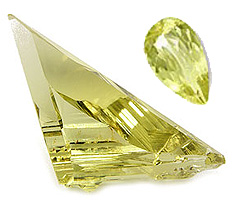
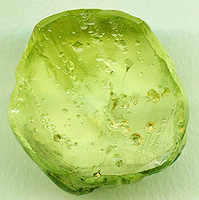
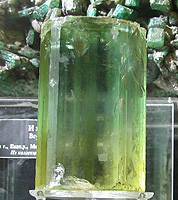
Poisonous and radioactive dangerous stones and minerals
** - poisonous stones and minerals (mandatory check in the chemical laboratory + explicit indication of toxicity).
** - radioactive stones and minerals (mandatory check on the standard dosimeter + ban on open sales in the case of radioactivity over 24 milli / g / h + additional measures of population protection).
All rare stones are subject to mandatory inspection at the standard dosimeter for the permissible level of radiation and in the chemical laboratory for the absence of poisonous and evaporating components that are dangerous to humans and the environment.


Comments
When commenting on, remember that the content and tone of your message can hurt the feelings of real people, show respect and tolerance to your interlocutors even if you do not share their opinion, your behavior in the conditions of freedom of expression and anonymity provided by the Internet, changes Not only virtual, but also the real world. All comments are hidden from the index, spam is controlled.